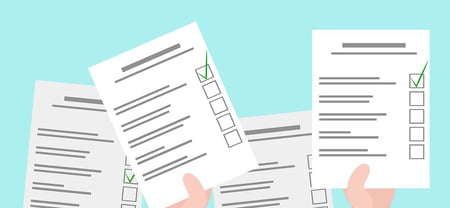Quality Assurance (QA) can mean different things in different industries. Sure, it’s always about maintaining checks and balances on quality outputs, but what does that mean? The term “quality” is a subjective one.
This minefield is only exacerbated in the translation industry by the fact that you, as the client, probably don’t know either a) the source content or b) what it looks like in translated form. You’re probably familiar with one language, but unlikely both. You have engaged the help of a translator, after all.
As a Language Services Provider (LSP), we’re used to helping our clients with their translation business needs, and we’re used to people feeling uneasy about not being able to check the quality of their translations. So, we do everything in our power to be transparent about the process and to explain what QA in translation is and how it works.
This is what we’ll explore in this article, so by the end of it, you’ll know what to look for in the QA process when you engage an LSP.
The QA Process
At a high level, the quality assurance process is pretty straightforward.
At each step of the process, a different pair of eyes checks the work done and helps the translated material maintain its authenticity to the original content.
Check 1 - Choose a Translator
There are a number of factors to take into account here. This is the backbone of the translation, so get this right and the chances are the process will be smooth.
The good news here is that you can understand why your translator is being chosen. Your LSP should be using translators with experience in both the native and target languages (obviously), but who also have a background in your industry. They need to know the meaning of what’s being translated, not just the words.
Check 2 – Let the Expert Translate
Time to leave it to the best person for the job.
Let them take the content and deliver it from one language to another, taking industry context, local nuances, and anything else relevant to the translation into account.
Check 3 – Edit the Translation
A second expert translator is brought on to review the translation. They’ll look at any grammatical issues, consider the localization aspects, and ensure the tone of voice is consistent with your brand.
Editors and translators may debate points and go back and forth until they reach a consensus on what’s best for the final translation.
Check 4 - Do You Need Desktop Publishing?
Not a lot of text sits by itself these days. It’s usually in some form of digital wrapper, and if that’s the case, there’s a good chance you’ll need Desktop Publishing (DTP).
This is where a graphic designer comes in and makes sure the new text fits in place of the old one (German can be 35% longer than English) and that visuals, like photography, are relevant for the target locale (in strict Muslim countries, you don’t want photos of women showing a lot of skin on your website).
Check 5 – Proofread the Translation
This isn’t done by the translator or the editor.
A third expert linguist is brought on to make sure there are no grammatical flaws in the final text.
This is one last cold look at translation before we hand it over to you.
Check 6 - Client Review
What do you think? We go back to the original problem that you probably only know one of the languages, but at least you know it’s been through five steps of QA filtration before landing on your desk.
You’ll still want to have a look, and maybe you’ll have some questions that need answering to make sure you’re satisfied. If you’re not satisfied for any reason, then this is where an amends loop takes place until you reach the point where you are totally satisfied.
One easy way to get a grip on the QA capabilities of your prospective LSP is to ask the big question:
The Big Question - Are They ISO 17100 Compliant
The International Organization of Standardization (ISO) is the most recognized watchdog of international standards.
ISO 17100 is the standard for the translation industry. If you’re awarded it, you open yourself up to regular independent auditing to make sure you’re conforming to your processes that deliver an accurate translation on every project.
And, as a business looking for a language services partner, if you’re thinking of engaging an LSP that is not ISO compliant, you really have to ask yourself…why?
These QA Checks Will Take You Forward
A good LSP hangs their hat on QA and invites outside auditing so prospective clients don’t just have to take their word for it. If you're talking to an LSP about getting their help moving into new territories, just ask them about their process. See what checks they have in place.
How do they pick their translators? Do they use independent editors? Do they have DTP capabilities? Does a third linguist come on board to proofread? And finally, when you get to see it, how will they handle any queries you may have?
They should welcome the scrutiny. They should understand that it’s part of your QA for bringing a LSP on board.
Get A Quote For Your Translation Project
If you’ve got translation requirements that you need help with, we’d love to sit down and talk with you about it.
Consultations are free and there’s no obligation.
With LinguaLinx, you won't ever have to worry about your message getting lost as it’s translated. You know you're in good hands as we’re ISO 17100 and ISO 9001 compliant, have over twenty years of professional translation experience, and have earned the trust of organizations around the world.
Continue Learning with These Helpful Articles








